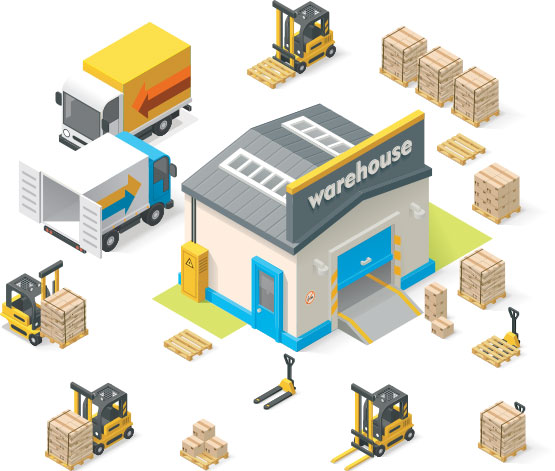
Today, online retail stores have become very popular. The growing popularity of this store is the convenience of people placing orders from the comfort of their homes. Also, they like when their products are delivered to their doorstep within a short time span. But have you ever thought about how e-retailers manage the delivery process with such ease?
No wonder it is just because of the best warehousing services in India. This sector is going through a crucial transformation in India. Previously, the Functions of Warehousing Services in India was only to stockpile goods. However, today, it has changed significantly. They have become a critical component of the manufacturing, supply chain, and eCommerce industries. Hence, in this blog, we will let you learn the ways warehousing in India is adapting to the changes.
Moving Forward
With the economical evolution of India, sophisticated warehousing systems are playing a crucial role in the manufacturing sector and in entire trading activities. Hence, warehousing is growing rapidly from about twenty thousand square feet to two to three lakhs square feet. Currently, the industry estimates showcase the growth of warehouse space to about 1,439 million square feet.
Enabling Growth
Recently, technological advances in Automatic Identification and Data Capture (AIDC) technology help the logistics companies in india to utilize optimal resources, track consignment and distribute cargo seamlessly. Since the barcode reader in the 1950s, technology has come a long way in this industry. Although they are still being used widely, some newer inventions like QR codes are becoming popular too. They are used to encode data to computer-compatible digital data. It even accelerates the flow of shipment among its beneficiaries.
Moreover, technologies like Real-Time Locating System or Radio-Frequency Identification are essentially used in a variety of automated data collection and identification applications to help warehouse operators keep a track of goods they are taking or dispatching. They are also witnessing a rise in the cost of real estate so that they can build a more economical structure.
Critical Challenges
The warehousing in India is still in its developing stage. Although they have abundant laborers, they do not have mechanisms to train them. Also, some people are blaming the presence of multiple taxes for impacting the growth of logistics companies in India. The industry is pressing a unified regulatory logistics body for integrated planning at a central level.
Other issues faced by these sectors are related to roadways. Although it is extensive, it is still inadequate and suffers from numerous deficiencies like inability to handle traffic density, poor condition of roads, and many more. The average productivity of trucks in India is 200km a day, which when minimized congestion can increase to up to 350 to 400 km. Lastly, India tends to have low warehouse capacity with modern facilities when it comes to the developing world.
Future Of Warehousing In India
As a percentage of GDP, logistics cost in developed economies is around 7 percent. On the other hand, in India, it was 13-14 percent. If its costs reduce to 4-5 percent, manufacturers tend to acquire enormous benefits. They look towards warehousing services in India to eliminate costs and support them in their growth. It is a very good opportunity for the logistics company.
The slower growth of eCommerce in India is due to the lack of logistics infrastructure and support. They require warehouses immediately to deliver the goods to customers beyond primary metros.
According to industry insiders, eCommerce firms might invest up to 2 billion in the next three years for infrastructure, warehousing, and logistics.
There is huge potential in the warehouse sector, and both organized and unorganized players might enter the market soon. With better infrastructure, efficient use of technology and manpower, and initiatives like “Make in India”, warehousing can play a vast role in economic growth.